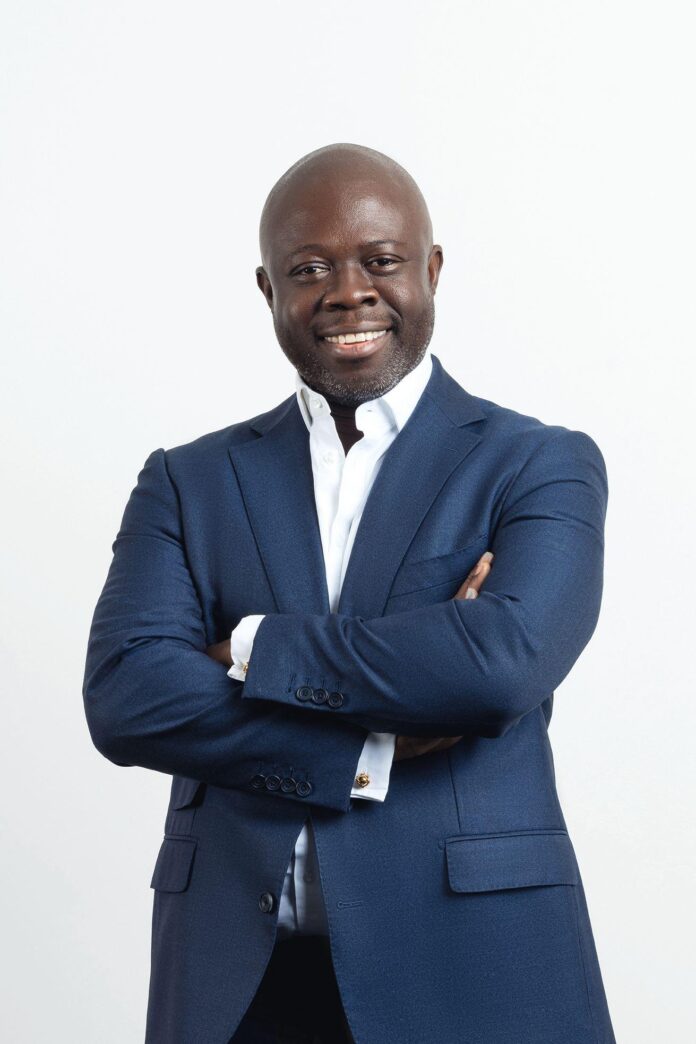Nana Sao is a South African born businessman who splits his time between his home country and the UK. He is a managing partner at Africa Capitalworks, an investment firm focused on companies in the sub-Saharan region, as well as the founder of youth charity The Sao Foundation. Sao collects African and African American art, and is on the board of advisers for the 1-54 Contemporary African Art Fair. Most recently he facilitated an international art project, which saw the large-scale sculpture The Resurrection of the Clothes Peg by Usha Seejarim assembled in Lagos, Nigeria and flown to Nevada in the US for the 2022 edition of the Burning Man festival.
The Art Newspaper: What are you looking out for at Frieze this year?
Nana Sao: I’ll have a look around Frieze, but I’ll definitely be at 1-54. I’m taking a group of about 45 collectors around the fair. Personally, I’ll be looking for paintings by African and African American artists. Plus, Gallery 1957 has an artist that I’m quite excited about: Zak Ové, who is showing at Frieze Sculpture. We’re trying to see if we can get Zak to bring his work to Burning Man.
Right now, I’m maxed out on NFTs [non-fungible tokens], prints and digital works. Early on, my collecting—especially having grown up in South Africa—was very political but I’m moving away from “woke” works. I’m looking for happier pieces and portraiture exhibiting very strong technical capabilities. I’m also looking for tapestries! I have very little of that right now.

The Resurrection of the Clothes Peg by Usha Seejarim was transported from Lagos to the Burning Man festival in the US
Courtesy Nana Sao
How quickly do you decide to buy a work of art?
Instantaneously. I can buy a work by looking at it on my phone; 80% of the time I’ve never had buyer’s remorse. Although I have had a few situations where a piece of work arrives and I look at it like, “what did I do?” There are times when I haven’t made a snap decision. Many years ago, I saw a Miriam Boehme work at a Paris fair and didn’t buy it—but it bothered me for two days and eventually I went back and got it.

Nana Sao made a second trip to a Paris fair to buy Marion Boehm’s Silent Heroes
Courtesy Nana Sao
What was the first work you ever bought?
A print of Mikhael Subotzky’s Haystack in the early 2000s. Mikhael was straight out of the University of Cape Town, and he came recommended by the art historian Barbara Lindop.
What was the last work you bought?
Jean David Nkot’s Untitled (Mother and Child) (2020): a large-scale portrait work with intricate cartographic details.
What do you regret not buying when you had the chance?
Early on, I was shown some Amoako Boafo works for around $10,000 each. I didn’t like the paintings, so I passed on them. I like his work a lot more now but he’s a little out of my price range!
If you could have any work from any museum, what would it be?
I don’t lust after other people’s work.
Where do you like to eat and drink in London?
Maison Estelle, a members’ club in Mayfair with a tapas-style pantry. My favourite thing there is the very simple bruschetta and tomato.
Do you have any parties lined up?
The 1-54 x ArtReview party, and another at the Mandrake Hotel hosted by Gallery 1957.
What’s your least favourite thing about art fairs?
The very proud “Sorry, this work’s not available”.
Where do you go in London to get away from it all?
Kyoto Gardens in Holland Park. Or if I’m with my daughter, the Princess Diana Memorial Garden at Kensington Palace, which she loves.
What tip would you give to someone visiting London for the first time?
Try to spend as much time in the city’s public spaces. Also, don’t get stuck in an Uber or a black cab. Taking the tube is a great way to get around and you can see a lot of London in a bus.
Besides art, what else do you collect?
Wine, tequila, mezcal and weird and esoteric sneakers. I use everything I collect.

























